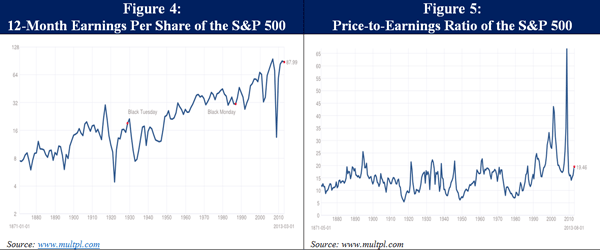 What in the world is going on?!
What in the world is going on?!
Can It Get Any Better Than This?
To many investors, developed markets appear healthier and stronger than they have in years. Major equity markets are rallying to record highs; corporate credit spreads are tight versus US Treasuries and getting tighter; and broad measures of volatility continue to fall to their lowest levels since 2007.
 This kind of news would normally point to prosperity across the real economy and call for a celebration – but prices do not always reflect reality. Moreover, the combination of high and rising valuations, low volatility, and a weakening trend in real earnings growth is a proven recipe for poor long-term returns and market instability.
This kind of news would normally point to prosperity across the real economy and call for a celebration – but prices do not always reflect reality. Moreover, the combination of high and rising valuations, low volatility, and a weakening trend in real earnings growth is a proven recipe for poor long-term returns and market instability.
Let’s take the S&P 500 as an example. It returned roughly 42% from September 1, 2011, through August 1, 2013, as the VIX Index fell to its lowest levels since the global financial crisis. Over that time frame, real earnings declined slightly (down about 2% through Q1 2013 earnings season), while the trailing 12-month price-to-earnings (P/E) ratio jumped 44%, from 13.5x to 19.5x. That means the majority of the recent gains in US equity markets were driven by multiple expansion in spite of negative real earnings growth. This is a clear sign that sentiment, rather than fundamentals, is driving the markets higher.

Of course, the simple trailing 12-month P/E ratio can be misleading at critical turning points if you are trying to handicap the potential for long-term returns. For example, the collapse in real earnings during the global financial crisis sent the S&P 500’s trailing P/E multiple through the roof by March 2009. So, while trailing P/E is a useful tool for understanding what has already happened in the market, the “Shiller P/E” is far more useful for calculating a reasonable range of expected returns going forward. This approach won’t help you much with short-term market timing, but current valuations have historically proven extremely useful in forecasting long-term returns. In his book Irrational Exuberance (2005), Robert Shiller of Yale University shows how this approach “confirms that long-term investors – investors who commit their money to an investment for ten full years – did do well when prices were low relative to earnings at the beginning of the ten years. Long-term investors would be well-advised, individually, to lower their exposure to the stock market when it is high … and to get into the market when it is low.”
Excerpted from Thoughts from the Frontline – a free weekly publication by John Mauldin, to read the full article– please click here.
[…] Thoughts from the Frontline: Can It Get Any Better Than This? […]